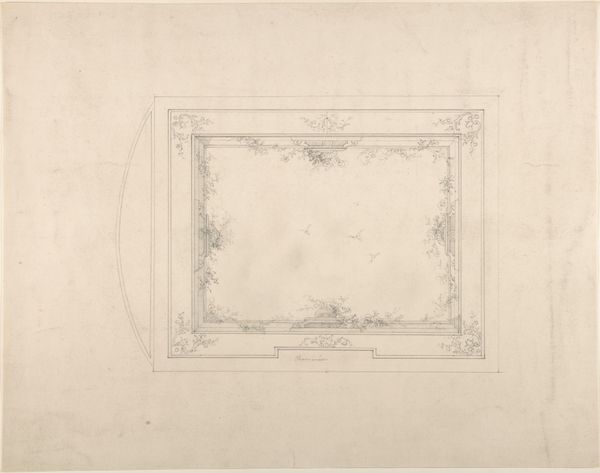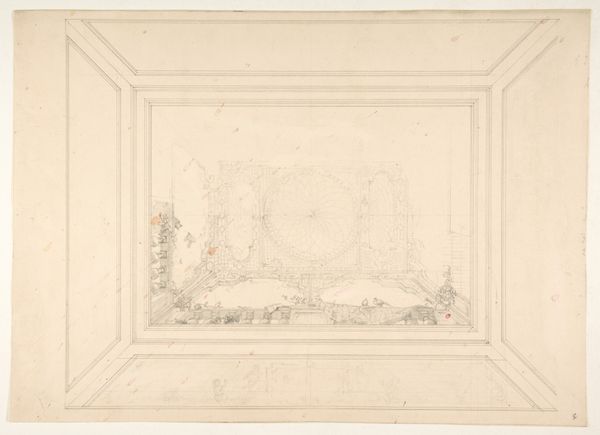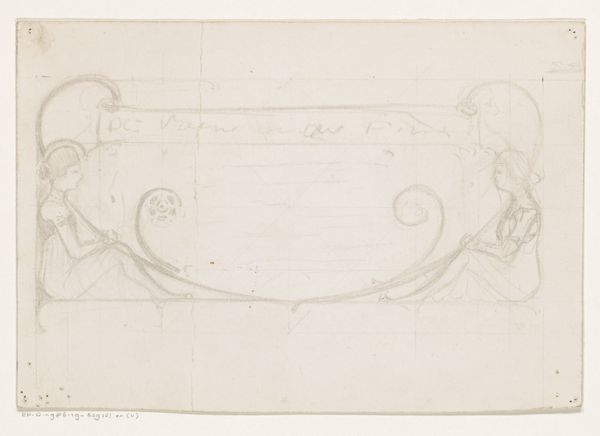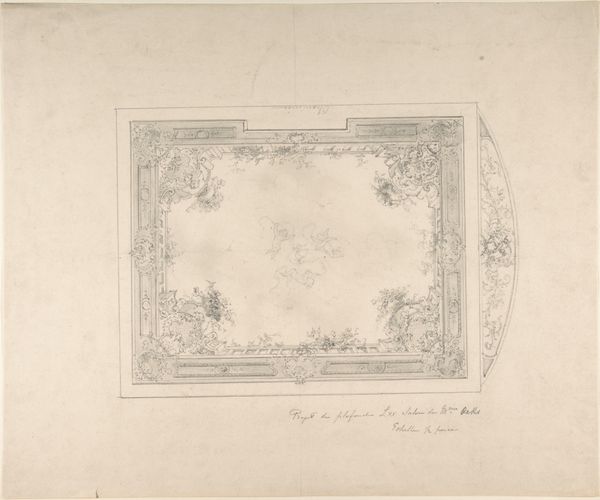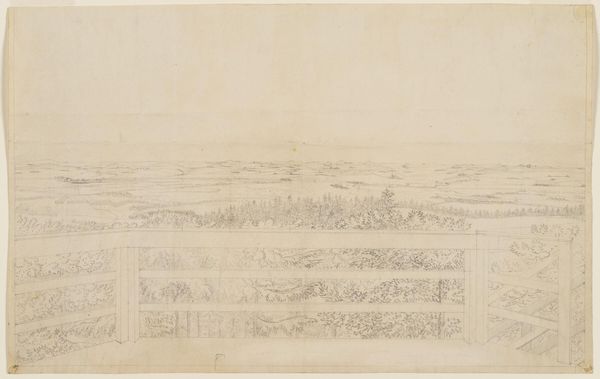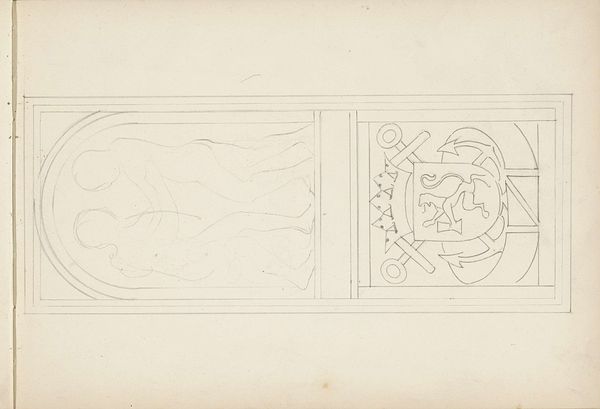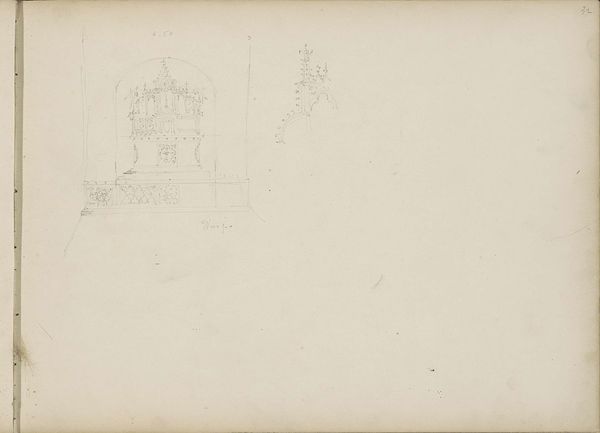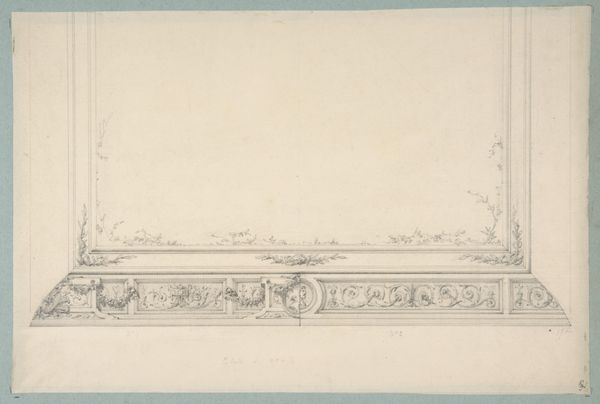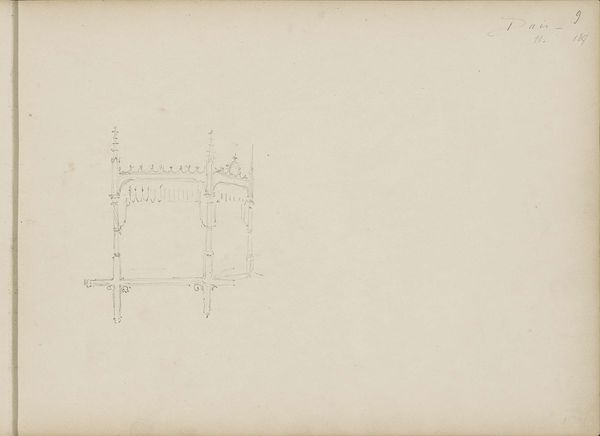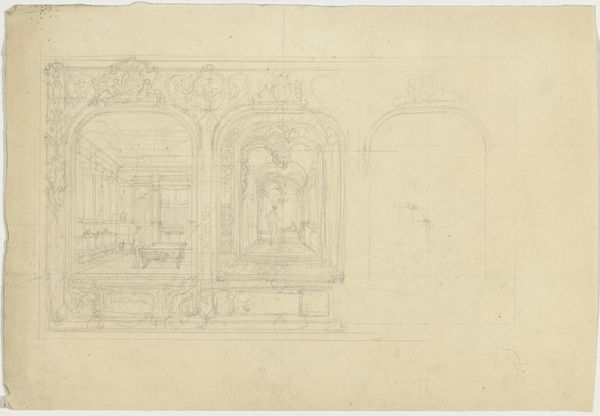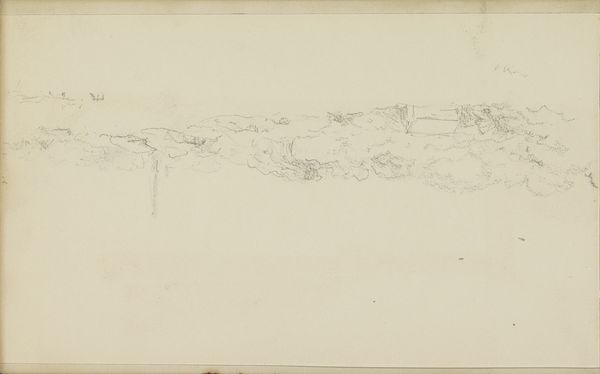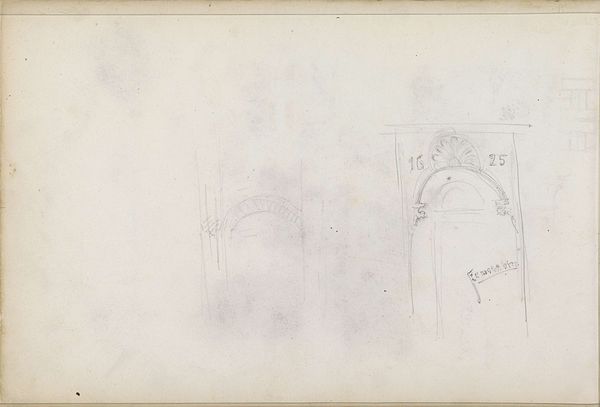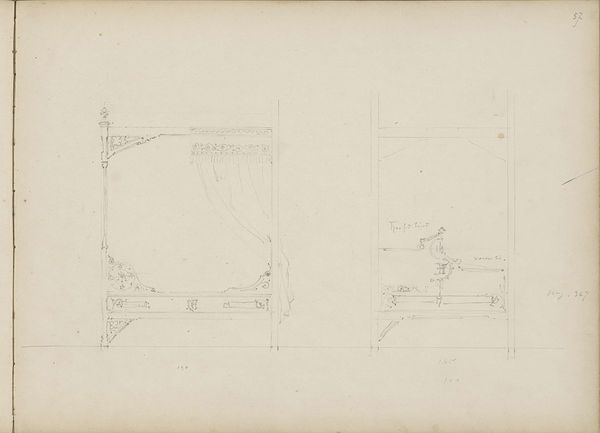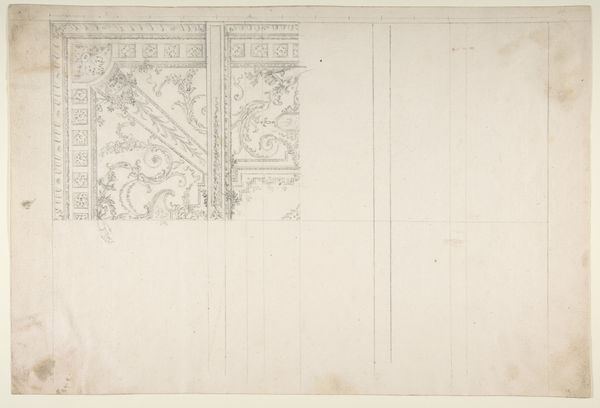
drawing, paper, pencil
#
drawing
#
amateur sketch
#
light pencil work
#
pen sketch
#
pencil sketch
#
figuration
#
paper
#
personal sketchbook
#
idea generation sketch
#
ink drawing experimentation
#
romanticism
#
pen-ink sketch
#
pencil
#
line
#
sketchbook drawing
#
sketchbook art
Copyright: Rijks Museum: Open Domain
Curator: This is a pencil drawing from around 1850 by Pierre Joseph Hubert Cuypers, titled "Angel in a Cartouche of Leaves." Editor: My first thought is of something fleeting, almost ephemeral. The pencil lines are so delicate; it feels like a captured breath on paper. Curator: Indeed, it’s quite subtle. Cuypers, better known for his architectural designs, created this as more of a sketch, almost like an idea taking form, situated within the context of burgeoning Romanticism. The religious element, here presented by the angel motif, became a focal point for interrogating the human-divine condition. Editor: What strikes me is the contrast. The rough sketch of the angel against the highly detailed leaves. It makes me wonder about his process – the initial, almost hurried, drawing of the figure versus the meticulous crafting of its surrounding environment. There's an emphasis here, not on high art but on something very real. Curator: Exactly. He may have explored the very Victorian ideals around home decor, while subtly inserting subversive artistic experimentation, a sort of social commentary. Who and how he imagined encountering such divine forms becomes crucial here. Editor: I think too of paper itself. We have cheap industrial paper taking on a delicate mantle. What does this paper, likely mass-produced, reveal about how access to the means of creation changed in the 19th century, challenging traditional artistic hierarchies? Curator: Very insightful. Thinking about who could have engaged with drawings like these also brings issues of class, access, and gender into the narrative of art history. Editor: It shifts our understanding away from simply ‘masterpieces’ and instead grounds us in the conditions that birthed them, recognizing the human touch behind even these delicate angel wings. It gives insight into Victorian modes of craft production as well. Curator: This exploration enriches our understanding, revealing Cuypers as both a skilled artisan grappling with his personal ideologies and the societal changes around him. Editor: It reminds us that art isn't just the finished object, but the entire network of material and social relationships that bring it into being. Thanks for sharing.
Comments
No comments
Be the first to comment and join the conversation on the ultimate creative platform.
